Hyperboloid Towers
Friday, 21st November 2008 by Alex Turnbull
Vladimir Shukhov was a Russian engineer, scientist and architect whose pioneering structural engineering work led to the design of the world's first hyperboloid structures.
In mathematics, a hyperboloid is a quadric ("a D-dimensional hypersurface defined as the locus of zeros of a quadratic polynomial") defined by, er... this complex-looking equation. Basically it's a type of three dimensional surface that is most commonly seen as the shape of power station cooling towers.
The first ever hyperboloid structure was a water tower that was built for the All-Russia exhibition of 1896. The design consists of straight beams in a lattice arrangement, meaning tall towers could be built with minimal wind resistance.
Today seven of Shukhov's towers remain standing in Russia, including the 160-metre-high Shukhov radio tower in Moscow which was built between 1919 and 1922 during the Russian Civil War. Currently under threat of demolition, the tower is at the top of UNESCO's 'Endangered Buildings' list, and fans have begun a campaign to save it.
The 128 metre Shukhov Tower on the Oka River is the only original surviving hyperboloid electricity pylon, which was a part of a 110kV powerline built between 1927 and 1929. Because of the lattice-style design it's barely visible in our thumbnail image, but if you click through to the map you'll be able to see the shadow of the latticework.
The use of hyperboloid structures wasn't limited to Russia however - in Spain the 158 metre Pylons of Cádiz, completed in 1960, remain as a fantastic example of this method of construction. Here the method was chosen because at the time the Spanish had no way of transporting large steel beams, and Francisco Franco's regime prohibited the import of anything that was up to the job.
Here's a KML file of all of the 7 remaining Shukhov towers (or on a map) and there are many other hyperboloid structures in various guises around the world. Wikipedia also has more on Hyperboloid structures, as well as Vladimir Shukhov himself.
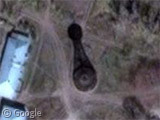
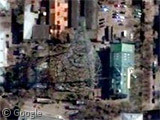
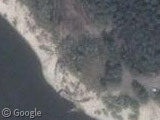
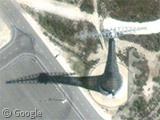
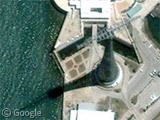


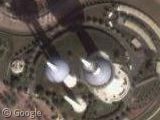
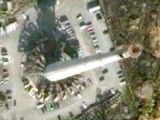
In Soviet Russia, hyperboloid structures design you!